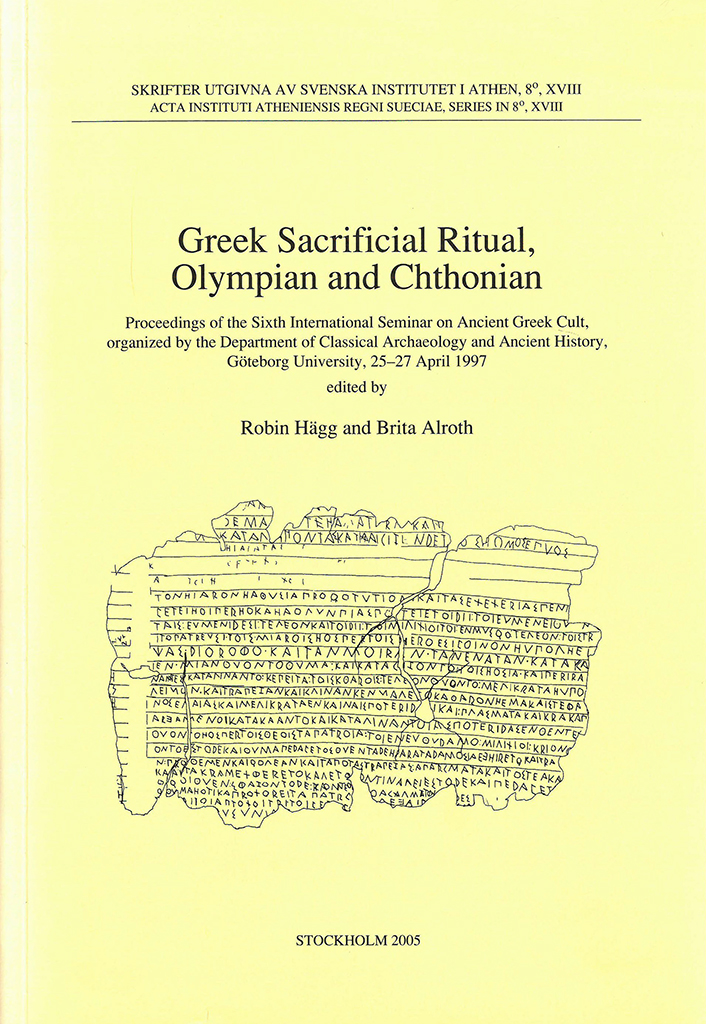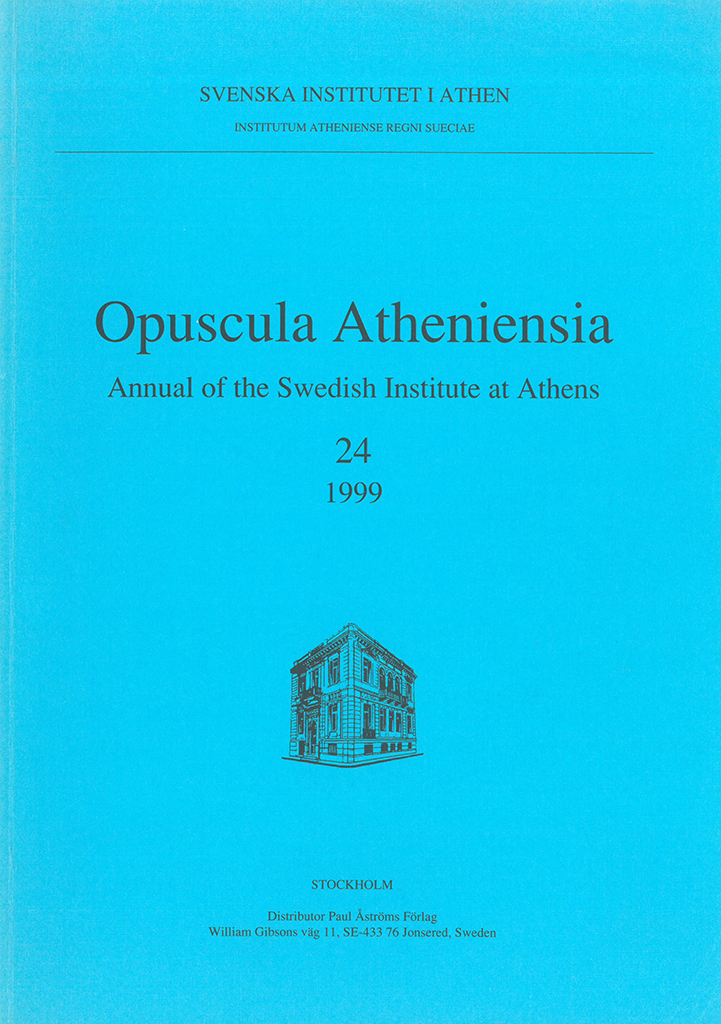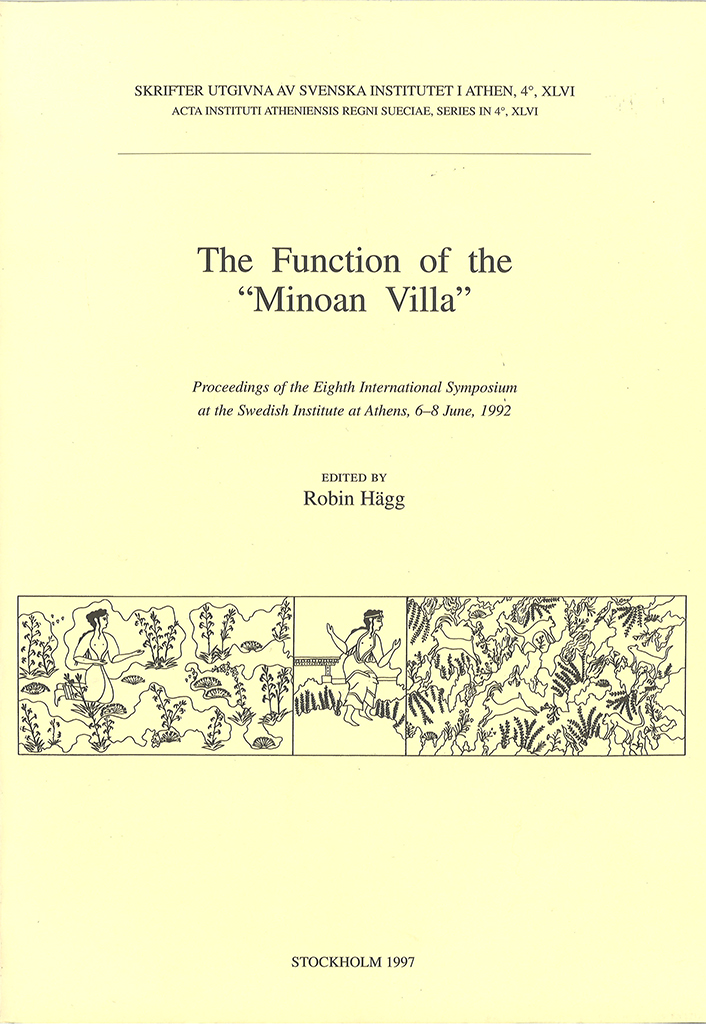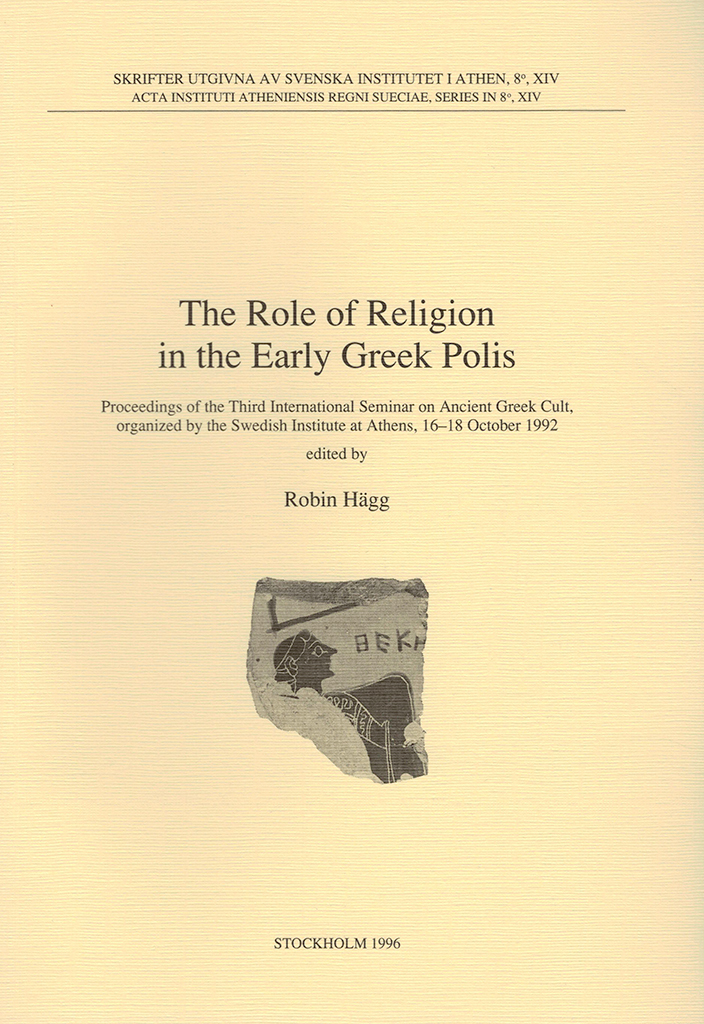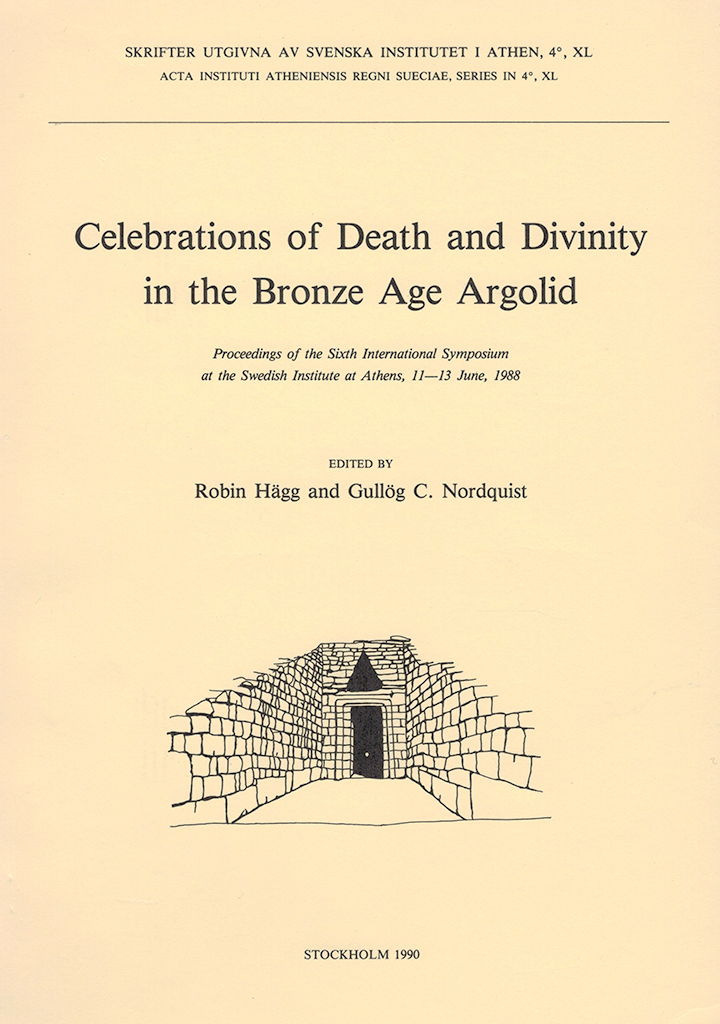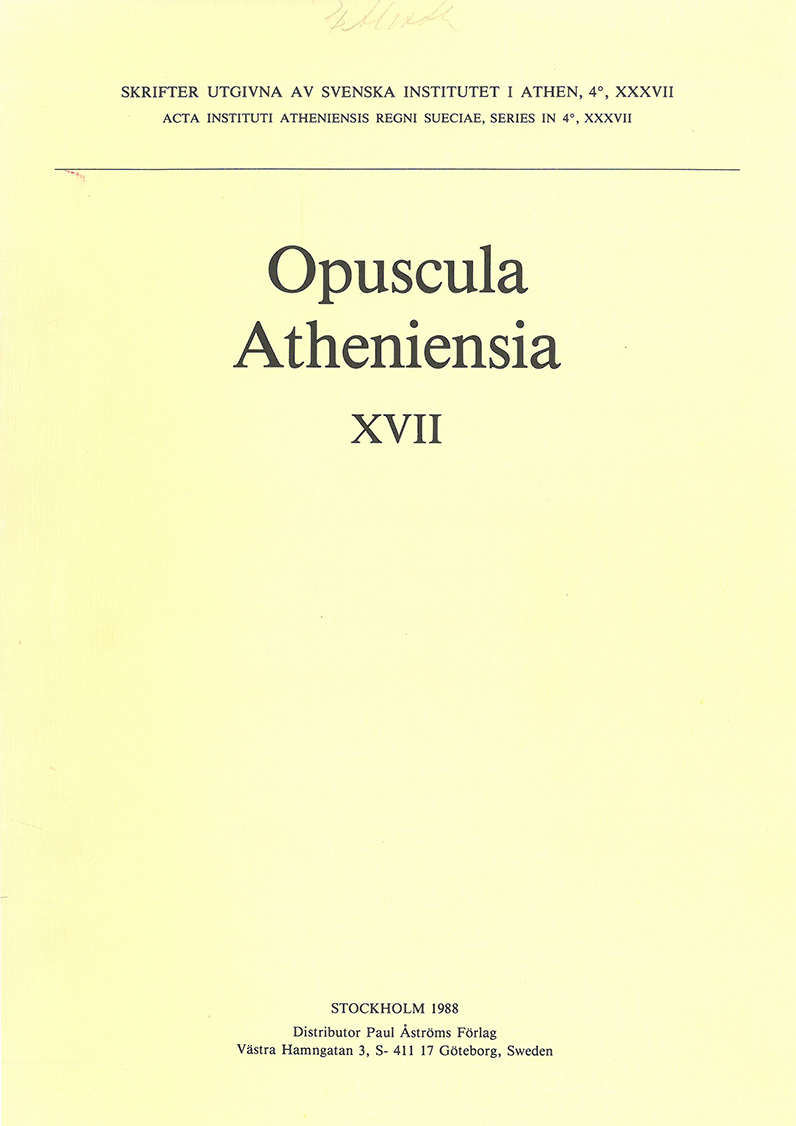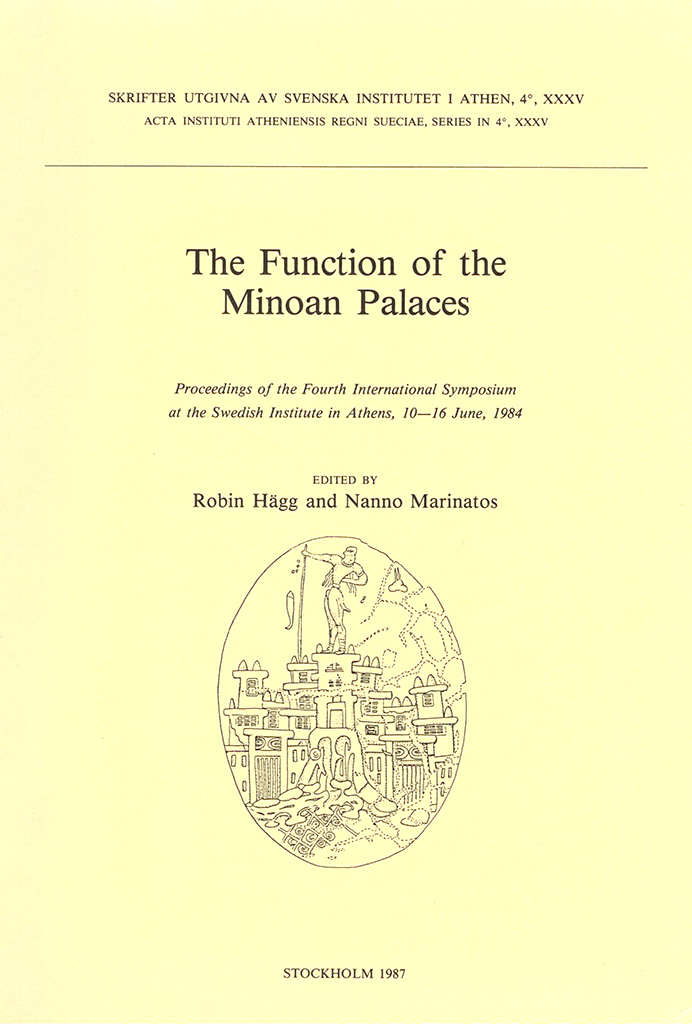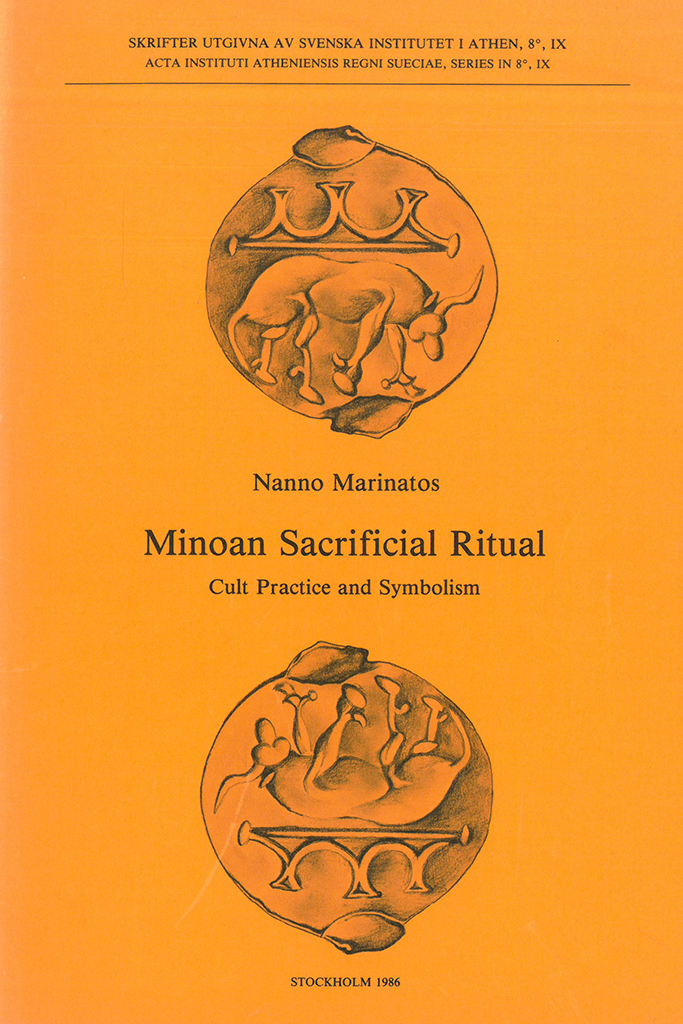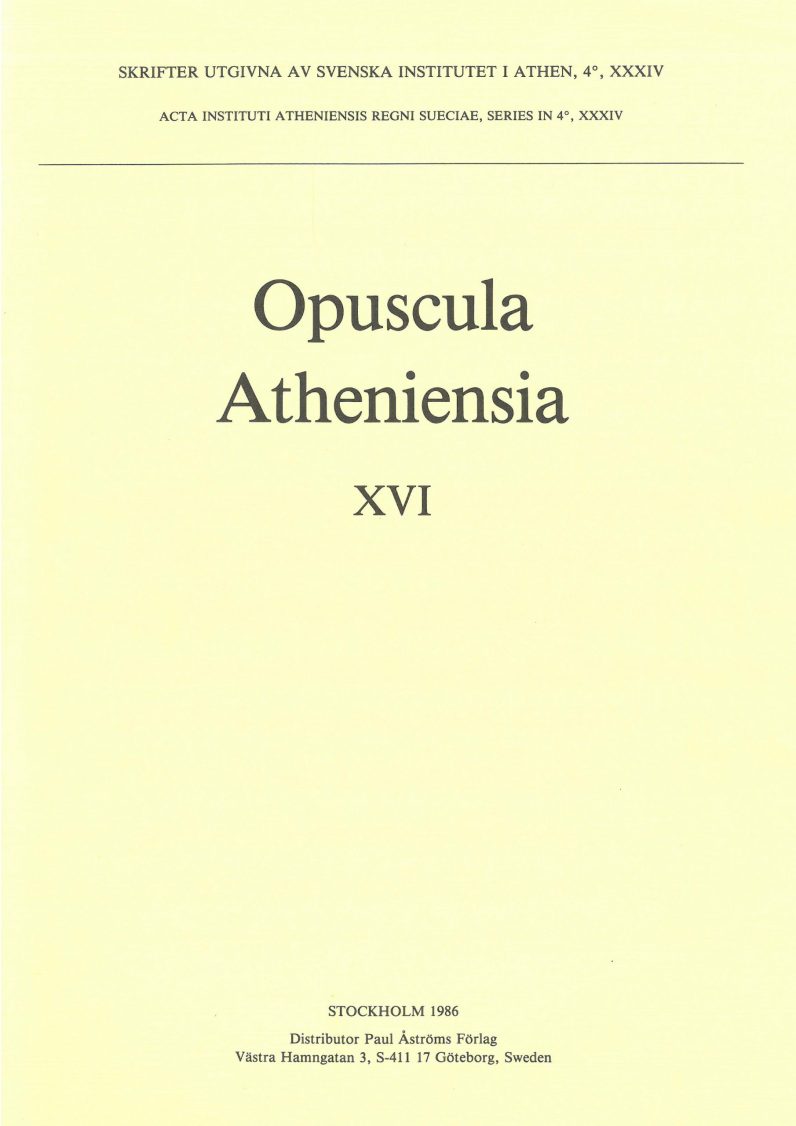Published by the Swedish Institute at Athens. Distributed by Astrom Editions. Greek sacrificial ritual, Olympian and Chthonian. Proceedings of the Sixth International Seminar on Ancient Greek Cult, organized by the Department of Classical Archaeology and Ancient History, Göteborg University, 25–27 April 1997 Edited by Robin Hägg & Brita Alroth Abstract A collection of eighteen papers, read or circulated at an international seminar in Göteborg, that deal with the ancient Greek sacrificial ritual, with special reference to the traditional dichotomy between the Olympian and the chthonian aspect, the relevance of which has been questioned in modern research. Among the special topics discussed are sacrifices to heroes and in the cult of the dead, magical sacrifice, sacrifice to the sea, pig sacrifice and the sacrifice of pregnant animals. Other aspects dealt with include the role of dedications in the cult and the practicalities of ruler-cult, as well as the priest’s role in Greek sacrifice. Several contributions discuss the implications of the recently published lex sacra from Selinous for the understanding of Greek sacrificial practice, reinterpreting previously known inscriptions in the light of the new evidence. Two papers deal with descriptions of sacrifice in Greek tragedy (Aeschylus, Oresteia; Sophocles, Trachiniae). There is a…
Published by the Swedish Institute at Athens. Distributed by Astrom Editions. Opuscula Atheniensia. Annual of the Swedish Institute at Athens 24, 1999 Contents Donald W. Jones, ‘The archaeology and economy of Homeric gift exchange’ Donald W. Jones, ‘The conundrum of Greek population growth in the 8th century B.C. Burials, settlements, and wells’ Jane F. Lloyd, ‘The three-dimensional form of the light area of the Minoan hall system and the southeast corner of the South Hous at Knossos’ Jari Pakkanen, ‘Defining the possible column shaft height range and profile. A case study based on the temple of Zeus at Labraunda’ Eva Rystedt, ‘No words, only pictures. Iconography in the transition between the Bronze Age and the Iron Age in Greece’ Zofia Stos-Gale, Maria Kayafa & Noel Gale, ‘The origin of metals from the Bronze Age site of Nichoria’ Lars Walløe, ‘Was the disruption of the Mycenaean world caused by repeated epidemics of bubonic plague?’ Book reviews Jeannette Forsén, ‘E. Christmann, Die Deutschen Ausgrabungen auf der Pevkakia-Magula in Thessalien II. Die Frühe Bronzezeit’ Jeannette Forsén, ‘J.B. Rutter, Lerna III. The pottery of Lerna IV‘ Michael Wedde, ‘K. Sbonias, Frühkretische Siegel. Ansätze für eine Interpretation der sozialpolitischen Entwicklung auf Kreta während der Frühbronzezeit’ Ann-Louise…
Published by the Swedish Institute at Athens. Distributed by Astrom Editions. The function of the “Minoan villa”. Proceedings of the Eight International Symposium at the Swedish Institute at Athens, 6–8 June, 1992 Edited by Robin Hägg Abstract These twenty papers, presented at an international conference in Athens, deal with various aspects of the so-called villas in Neopalatial Crete and their possible predecessors or equivalents in the preceding, Protopalatial period. They are followed by transcripts of the discussions of the symposium. Among the problems treated are: the origin of the “villa system”, the definition of the “villa”, the architectural analysis of buildings and building complexes, the magico-religious background of the “villa”, the role of religious painting, the origin of the Cretan andreion, and a study of ceramic exchange between towns and outlying settlements in Neopalatial eastern Crete. Special discussions concern the functional analysis of the architecture, administration and bureaucracy, with special reference to seals, sealings and Linear A tablets and political geography. Contents ‘Preface’, p. 7. Henri van Effenterre & Micheline van Effenterre, ‘Towards a study of Neopalatial “villas”: modern words for Minoan things’, pp. 9–13. Wolf-Dietrich Niemeier, ‘The origins of the Minoan “villa” system’, pp. 15–19. J.A. MacGillivray, ‘The Cretan…
Published by the Swedish Institute at Athens. Distributed by Astrom Editions. The role of religion in the early Greek polis. Proceedings of the Third International Seminar on Ancient Greek Cult, organized by the Swedish Institute at Athens, 16–18 October 1992 Edited by Robin Hägg Abstract These twelve papers read at an international seminar in Athens deal with various aspects of the role of religion in the early Greek polis, based on the epigraphical, iconographical and archaeological evidence. Among the special topics discussed are territorial myths and the mythical articulations with regard to the early polis, the Greek temple-builders, the distribution of offerings and rituals between graves and sanctuaries, the development of sacred and profane civic ideology in Athens, processions (pompai), verbal and ritual obscenity in women’s cults, prohibitionary inscriptions, the role of the seer, the Thesmophorion in central Athens, the cults in Solonian Athens, cults by the seashore and Dionysos at Argos. Contents Preface (p. 7) Irad Malkin, ‘The polis between myths of land and territory’, pp. 9–19. Walter Burkert, ‘Greek temple builders: who, where and why?’, pp. 21–29. François de Polignac, ‘Entre les dieux et les morts. Statut individual et rites collectifs dans la cite archaïque’, pp. 31–40. Sanne…
Published by the Swedish Institute at Athens. Distributed by Astrom Editions. Celebrations of death and divinity in the Bronze Age Argolid. Proceedings of the Sixth International Symposium at the Swedish Institute at Athens, 11–13 June, 1988 Edited by Robin Hägg & Gullög C. Nordquist Abstract Twenty-four papers on various aspects of burial customs and religious cult practice in the region Argolis (Greece) during the Bronze Age, read at an international conference in Athens; the papers are followed by transcripts of the discussions of the symposium. The papers are arranged in six groups, discussing (1) ceremonial practices in the Early and Middle Helladic periods, (2) mortuary customs, state formation and Mycenaean society, (3) burial rites in tumuli, tholoi and chamber tombs, (4) symbols and symbolism in Mycenaean celebrations, (5) Mycenaean cults and cult practices, and (6) religious aspects of the post-Bronze-Age period. Contents Preface (p. 7) Ceremonial practices in the Early and Middle Helladic periods Daniel J. Pullen, ‘Early Helladic burials at Asine and Early Bronze Age mortuary practices’, pp. 9–12 Miriam Caskey, ‘Thoughts on Early Bronze Age hearths’, pp. 13–21 Carol Zerner, ‘Ceramics and ceremony: Pottery and burials from Lerna in the Middle and early Late Bronze Ages’, pp. 23–34…
Published by the Swedish Institute at Athens. Distributed by Astrom Editions. Opuscula Atheniensia 17 Contents Articles Paul Åström, Katie Demakopoulou & Gisela Walberg, ‘Excavations in Midea 1985’, pp. 7–11. Valerie Cook, ‘Cyprus and the outside world during the transition from the Bronze Age to the Iron Age’, pp. 13–32. Kåre Fagerström, ‘Fnds, function and plan: a contribution to the interpretation of Iron Age Nichoria in Messenia’, pp. 33–50. Arne Furumark (†), ‘Linear A and Minoan religion’, pp. 51–90. Heinz-Eberhard Giesecke, ‘Kretische Schurze’, pp. 91–98. Robin Hägg, ‘The last ceremony in the Throne Room at Knossos’, pp. 99–105. Pontus Hellström, ‘The planned function of the Mnesiklean Propylaia’, pp. 107–121. Bente Kiilerich, ‘Bluebeard—a snake-tailed Geryon?’, pp. 123–136. Nanno Marinatos, ‘The “African” of Thera reconsidered’, pp. 137–141. Susana Sjödin, ‘Bronze Age pottery sherds from Cyprus. Further supplementary material from Kalopsidha trench 9’, pp. 143–165. Christiane Sourvinou-Inwood, ‘”Myth” and history: on Herodotus III.48 and 50–53’, pp. 167–182. Colette Verlinden, ‘Réflexions sur la function et la production des figurines anthropomorphes Minoennes en bronze’, pp. 183–189. Anna Wærn-Sperber, ‘Mössbauer spectroscopy and quantitative chemical analyses of Early Cypriote black-topped pottery. A preliminary investigation’, pp. 191–197. Gisela Walberg, ‘Was Evans right? Further notes on Middle Minoan chronology’, pp….
Published by the Swedish Institute at Athens. Distributed by Astrom Editions. Early Greek cult practice. Proceedings of the Fifth International Symposium at the Swedish Institute at Athens, 26-29 June, 1986 Edited by Robin Hägg, Nanno Marinatos & Gullög C. Nordquist Abstract Twenty-eight papers on the phenomena of early Greek cult practice, concentrating on the Late Geometric, Archaic and Classical periods, read at an international conference in Athens; the papers are followed by transcripts of the discussions of the symposium. The papers are arranged in eight groups, discussing (1) animal sacrifice, Minoan to Greek, (2) Greek sacrificial ritual, (3) early cults at Knossos and Sparta, (4) temples, altars, cult images and ritual meals, (5) water in the cult, (6) votive offerings, (7) cult practice and cultural anthropology, and (8) special cults and cult practices (including cults of heroes, veneration of ancestors, ritual haircuts and building sacrifices). Bibliographical information Robin Hägg, Nanno Marinatos & Gullög C. Nordquist, eds, Early Greek cult practice. Proceedings of the Fifth International Symposium at the Swedish Institute at Athens, 26-29 June, 1986 (Skrifter utgivna av Svenska institutet i Athen, 4°, 38), Jonsered 1988. ISSN 0586-0539. ISBN 9789185086979. Alternative series title: Acta Instituti Atheniensis Regni Sueciae series in 4˚,…
Published by the Swedish Institute at Athens. Distributed by Astrom Editions. The function of the Minoan palaces. Proceedings of the Fourth International Symposium at the Swedish Institute in Athens, 10–16 June, 1984 Edited by Robin Hägg & Nanno Marinatos Abstract Fourty-seven papers on the functions of the palace, the most characteristic phenomenon of the Minoan Bronze Age civilization in Crete, read at an international conference in Athens; the papers are followed by transcripts of the discussion of the symposium. The papers are arranged in eight groups, discussing (1) background (Near Eastern and Egyptian economy), parallels (Mycenaean palaces) and methodology; (2) the emergence of the Cretan palaces; (3) the relations of the palace with town and territory; (4) recent archaeological finds; (5) the palaces as ceremonial and religious centres; (6) the palaces as centres of trade and manufacture; (7) the administrative systems of the Minoans and Mycenaeans; and (8) the function of the frescoes in the palace. For James Walter Graham and to the memory of Spyridon Marinatos. Contents ‘Preface’, p. 9 Background and methodology Benjamin R. Foster, ‘The Late Bronze Age palace economy: A view from the East’, pp. 11–16 Wolfgang Helck, ‘The dissolution of the palace economy in the…
Published by the Swedish Institute at Athens. Distributed by Astrom Editions. Minoan sacrificial ritual. Cult practice and symbolism By Nanno Marinatos Abstract The cult practice and symbolism of Minoan sacrifice ritual are examined in this monograph. The archaeological evidence is analyzed and suggestions are made concerning the type and place of sacrifice, location of cult meals and species of sacrificial animals. The iconographical evidence supplies additional information about the priesthood, manner of sacrifice and occasions during which animals were slaughtered. Several scenes from glyptic art are discussed where sacrificial ritual is presented as a pictorial metaphor. Certain symbols are isolated and their connection with sacrificial practice is established. Through a projective mechanism, the Minoans expressed not only the importance of animal sacrifice but their perception of it as an extension of the laws of nature. Contents Introduction Part 1. The archaeological and iconographical evidence Types of animals Place of sacrifice; altars Manner of sacrifice Libations Animal rhyta and libation tables Processions Burying and burning the sacrificial animal Cult meals The skull and horns of the sacrificial animal Occasion Symbolic representations Conclusions Part 2. Symbols on seals denoting sacrifice of animals Introduction The eight-shield The sacred garment The impaled triangle Types…
Published by the Swedish Institute at Athens. Distributed by Astrom Editions. Opuscula Atheniensia 16 Contents Paul Åström, ‘Hala Sultan Tekke—an international harbour town of the Late Cypriot Bronze Age’, pp. 7–17. Paul Åström & Katie Demakopoulou, ‘New excavations in the Citadel of Midea, 1983–1984’, pp. 19–25. Paul Åström, R. Maddin, J.D. Muhly & T. Stech, ‘Iron artifacts from Swedish excavations in Cyprus’, pp. 27–41. Kevin Clinton, ‘The author of the Homeric Hymn to Demeter’, pp. 43–49. Harold D. Evjen, ‘Competitive athletics in ancient Greece: the search for origins and influences’, pp. 51–56. Nanno Marinatos & Robin Hägg, ‘On the ceremonial function of the Minoan polythyron’, pp. 57–73. Erik Østby, ‘The archaic temple of Athena Alea at Tegea’, pp. 75–102. Eva Rystedt, ‘The foot-race and other athletic contests in the Mycenaean world. The evidence of the pictorial vases’, pp. 103–116. Charlotte Scheffer, ‘Some further comments on the gorgoneion skyphoi’, pp. 117–122. Miscellanea Yvonne Backe-Forsberg & Christina Risberg, ‘Metal working at Asine. ‘New’ finds from the 1926 season’, pp. 123–125. Robert B. Koehl, ‘Another look at the Mycenaean Base Ring vase from the Athenian Agora’, pp. 125–126. David Symons, ‘An unpublished tomb group from Paphos’, pp. 127–130. Robin Hägg, ‘The Swedish Institute…

